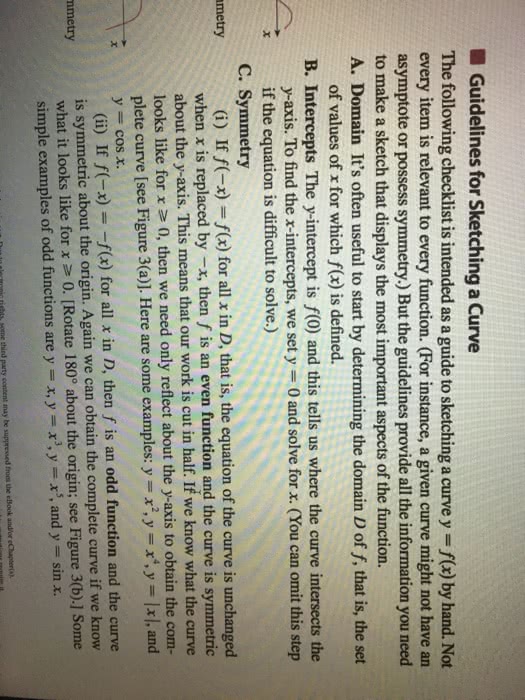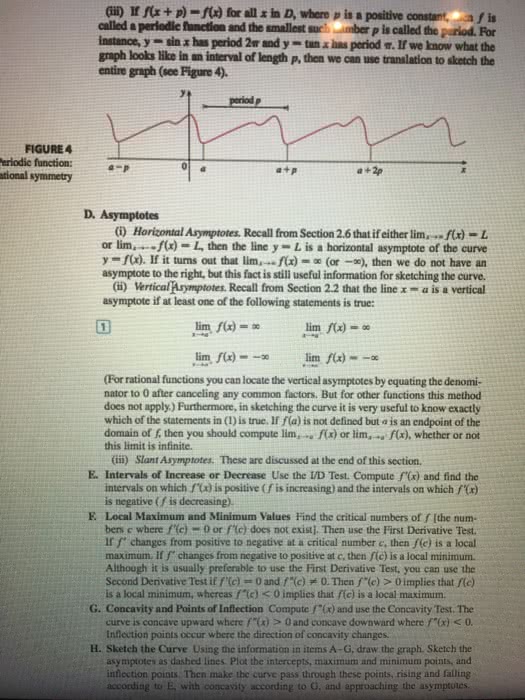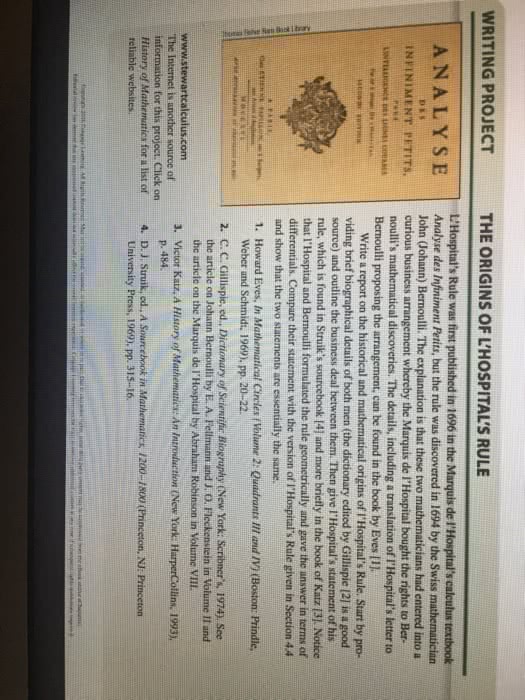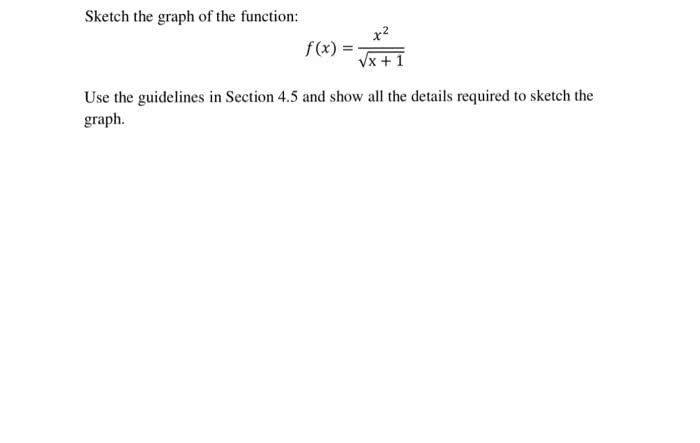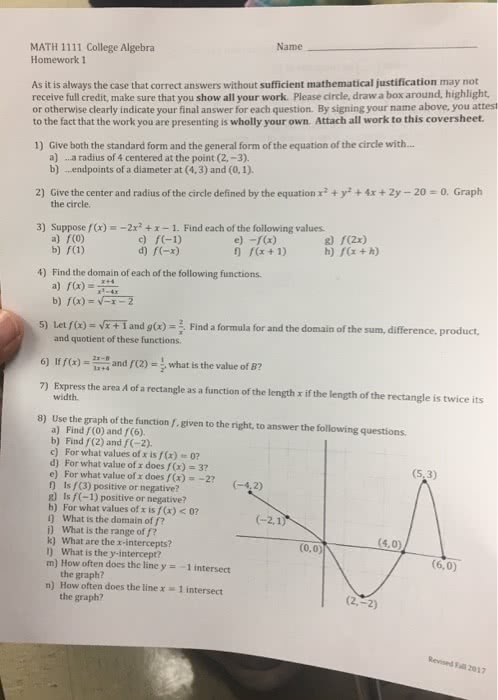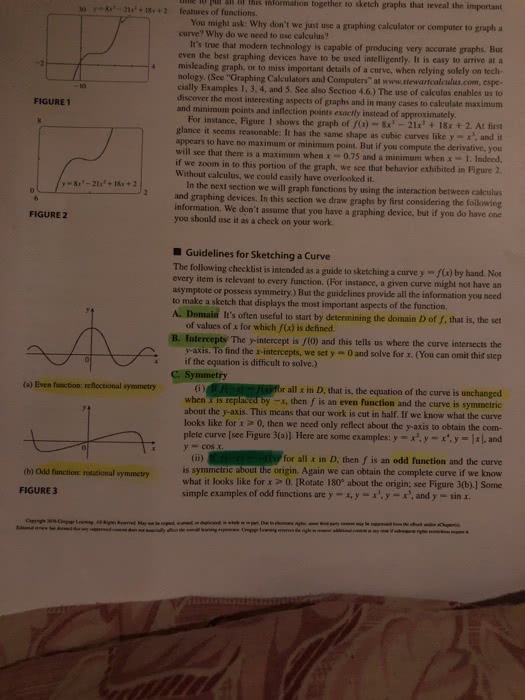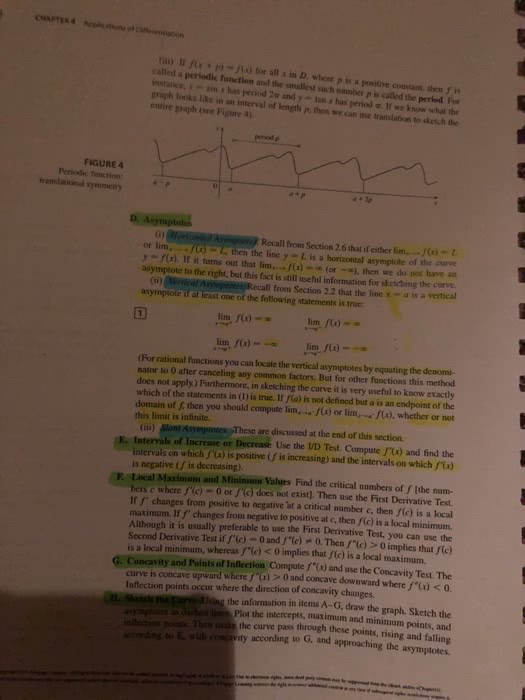MATH 1550 Chapter : Chapter4help

This document is designed to help you with Section 4.3 and 4.5. I attempt to help
you think about what should be going through your mind when you get asked certain
questions.
1. What is the domain of f?For a polynomial, the domain is always (−∞,∞).
However, many functions have some points where they are not defined. For
instance, √xis not defined if x < 0, and 6
√−x−1 has a domain of (−∞,1]
sinc −x−1≥0 when x≤1. But, remember if nis odd then n
p(x) is defined
for all x; only even roots require what’s “inside the root” to be greater than
or equal to 0. Other functions with special domains include ln xor tan x.
Finally, don’t forget if we have a function of the form f(x)
g(x), then it will not
be defined any place that g(x) = 0. Here is an example. What is the domain
of h(x) = ln x
4
√x2−4? We know that his undefined when x≤0 since ln xis
undefined there. Also, since 4
√x2−4 is undefined when −2< x < 2, his
undefined there as well. Finally, the denominator is 0 when x=−2 and when
x= 2 implying those points are not in the domain of h. Thus, the domain of
his (2,∞).
2. Is fan even, an odd, or a periodic function? You will not see periodic
functions in this class for the most part other than trig functions. However,
you should be able to identify both even and odd functions. Remember, fis
even if f(−x) = f(x) and fis odd if f(−x) = −f(x). In other words, here
is how to find if a function is even, odd, or neither. Plug (−x) in anywhere
you see x. Then if we get the same functions as if we had kept x, then fis
even. If we get the negative of the original function then fwas odd. A couple
examples should help with this. Let f(x) = −x4. Let’s examine f(−x) and
see what happens. Plugging in (−x) we get f(−x) = −(−x)4=−x4. Let
g(x) = x
x2−1. Then g(−x) = (−x)
(−x)2−1=−x
x2−1=−g(x). Thus gis odd.
Finally, if h(t) = t+1, then h(−t) = −t+ 1 which is not equal to h(t) or −h(t).
3. What are the x- and y-intercepts of f?Finding the y-intercept is ex-
tremely easy, just plug in x= 0. For instance, the y-intercept of exis
e0= 1. However, finding the x-intercept can be more challenging. You must
set f(x) = 0 then solve for the xvalue(s) in order to find where the function
equals zero a.k.a has a root. Sometimes a function has multiple x-intercepts or
none. A function always has exactly one y-intercept unless f(0) is undefined.
1
Document Summary
This document is designed to help you with section 4. 3 and 4. 5. For a polynomial, the domain is always ( , ). However, many functions have some points where they are not de ned. For instance, x is not de ned if x < 0, and 6 x 1 has a domain of ( , 1] sinc x 1 0 when x 1. But, remember if n is odd then np(x) is de ned for all x; only even roots require what"s inside the root to be greater than or equal to 0. Other functions with special domains include ln x or tan x. Finally, don"t forget if we have a function of the form f (x) g(x) , then it will not ln x of h(x) = 4 x2 4 be de ned any place that g(x) = 0. We know that h is unde ned when x 0 since ln x is unde ned there.


